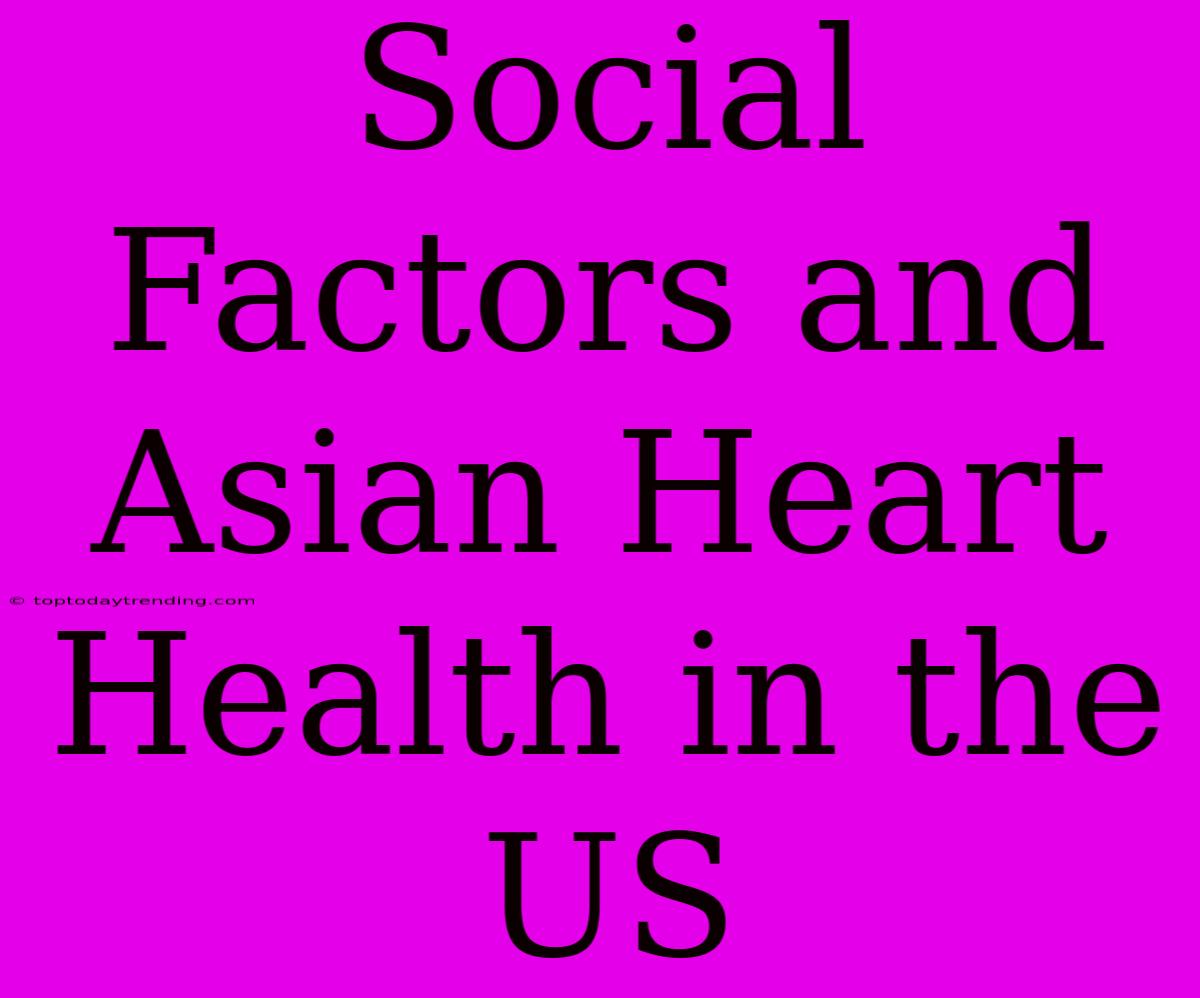Social Factors and Asian Heart Health in the US: A Complex Intersection
Heart disease remains a leading cause of death in the United States, impacting individuals across various demographics. While the Asian American population has historically been regarded as having a lower risk of cardiovascular disease compared to other ethnic groups, recent research has highlighted significant disparities and concerning trends. This article dives into the complex interplay between social factors and Asian heart health in the US, uncovering key challenges and potential solutions.
The Paradox of Asian Heart Health: A Closer Look
Despite a generally lower incidence of heart disease, the Asian American population faces a unique set of challenges:
- Substantial variation within the community: The diverse Asian American population encompasses over 50 ethnicities with varying socioeconomic statuses, cultural practices, and risk factors. This makes it crucial to move beyond generalizations and consider individual groups.
- Rising prevalence of heart disease: While the rate of heart disease among Asian Americans is lower than other ethnic groups, it is steadily rising. This increase is driven by factors such as dietary changes, urbanization, and rising rates of obesity and diabetes.
- Underdiagnosis and undertreatment: Studies suggest that Asian Americans may experience delays in diagnosis and receive less aggressive treatment for heart disease compared to their non-Asian counterparts. This can be attributed to language barriers, cultural beliefs, and healthcare access disparities.
- Social determinants of health: Socioeconomic factors, including poverty, limited access to healthcare, and educational attainment, play a crucial role in shaping health outcomes.
Unpacking the Social Factors: Key Drivers of Heart Disease
Socioeconomic Status:
- Lower socioeconomic status: Many Asian Americans face economic challenges, including poverty, unemployment, and lack of access to affordable housing. These factors can lead to unhealthy lifestyle choices, stress, and limited access to preventive care.
- Immigrant status: Newly arrived immigrants may experience acculturation stress and face challenges navigating the healthcare system.
- Language barriers: Communication gaps can create barriers to accessing healthcare services and understanding health information.
Cultural Factors:
- Dietary changes: Traditional Asian diets often emphasize fresh fruits, vegetables, and lean proteins. However, acculturation and modernization often lead to the adoption of Western diets, rich in saturated fats, sugar, and sodium, increasing risk factors.
- Stigma around mental health: Seeking mental health support is often stigmatized within some Asian cultures. However, stress and anxiety play a significant role in heart health.
- Cultural beliefs about healthcare: Misconceptions about heart disease and reluctance to seek medical attention due to cultural beliefs can delay diagnosis and treatment.
Healthcare Access and Disparities:
- Limited access to healthcare: Factors like insurance coverage, geographical location, and availability of culturally competent healthcare providers can limit access to preventive care and treatment.
- Lack of culturally competent healthcare providers: The lack of diverse healthcare providers who understand the unique needs and experiences of Asian Americans can lead to misdiagnosis and communication breakdowns.
Bridging the Gap: Towards Better Heart Health for Asian Americans
Addressing these social factors requires a multi-pronged approach:
- Promoting culturally sensitive healthcare: Training healthcare providers on cultural nuances, language translation services, and community-based outreach programs can enhance communication and trust.
- Empowering communities: Public health campaigns tailored to Asian American communities should focus on education about heart disease prevention, healthy lifestyle choices, and early detection.
- Addressing socioeconomic disparities: Policies aimed at reducing poverty, improving access to affordable housing, and providing job training can create a more equitable playing field.
- Encouraging mental health support: Destigmatizing mental health within Asian American communities and promoting culturally sensitive mental health resources are crucial for holistic well-being.
By understanding the intricate interplay between social factors and Asian heart health, we can develop targeted interventions that empower communities and improve outcomes. Ultimately, a more just and equitable society is essential for achieving lasting positive changes in heart health across all demographics.

